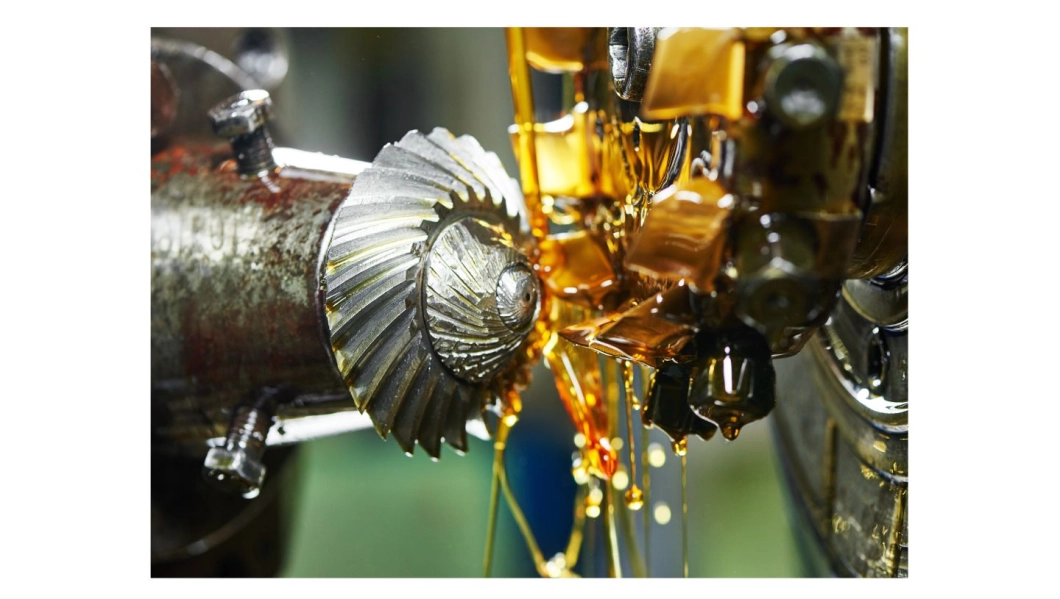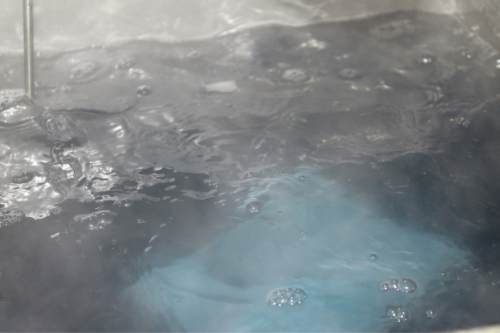Tue, 13 May 2025 15:34:19 +0200

Whether it's stainless steel, carbon steel, aluminum, brass, plastics, bronze, or zamak, removing impurities, chips, oxides, oils, or any type of dirt is a fast and effective process thanks to DCM Ultrasonic's range of part cleaning equipment.
Removing this dirt is essential not only to ensure the final quality of the product, but also to avoid problems in later stages of the production process, such as assembly, painting, heat treatment, or inspection.
1. Complete and Homogeneous Cleaning
Ultrasonic waves propagate throughout the entire volume of the cleaning fluid, reaching every corner of the parts, including cavities, threads, channels, and microperforations.
2. Effective Removal of Oils and Metal Particles
Thanks to the cavitation effect, ultrasonic cleaning can effectively remove coolant emulsions, cutting oils, microscopic metal particles, and any other machining residue.
3. Material Care
Because it is a non-abrasive process, there is no physical contact with the parts, which prevents any type of scratching, deformation, or alteration of the cleaned surfaces. It is ideal for precision components.
4. Reduction in Cleaning Time
An ultrasonic cleaning machine can leave a part completely clean in minutes, without manual intervention. This allows the process to be automated and increases production efficiency.
5. Compatibility with Different Materials
Whether the parts are made of steel, aluminum, brass, titanium, or composites, the process is easily adapted by adjusting the frequency, temperature, and detergent.
6. Savings in Chemicals and Resources
The efficiency of ultrasound allows for working with less aggressive detergents, reducing the frequency of liquid changes, and minimizing the use of polluting solvents.
7. Compliance with Industrial Standards
Many sectors such as the automotive, aeronautical, medical, and metalworking industries demand high cleaning standards. Ultrasound guarantees consistent and validatable results.
SEE ULTRASONIC CLEANING MACHINES FOR MACHINING

Removing machining debris with an ultrasonic bath.
In addition to its effectiveness, ultrasonic cleaning also represents a sustainable option. It reduces the consumption of aggressive solvents, saves energy thanks to thermal insulation, and minimizes polluting residues. All of this contributes to a cleaner, more profitable, and environmentally friendly industry.
Removing machining dirt with ultrasound is one of the most effective, precise, and sustainable ways to keep industrial parts in optimal condition. Compared to traditional methods, ultrasonic technology offers advantages that improve quality, reduce time, and ensure a clean and safe process.
At DCM Ultrasonic, we have decades of experience providing ultrasonic cleaning solutions tailored to our customers' unique needs. If you want to improve efficiency, reduce costs, and ensure perfect cleaning of your parts after machining, don't hesitate to contact us.

News
Cleaning Machined Metal Parts and Removing Machining Dirt
13 May de 2025
Discover how to remove machining dirt with ultrasonic cleaning machines. Among the many sources of contamination, machining dirt (composed of chips, oils, emulsions, coolants, and metal microparticles) represents a constant challenge. Fortunately, ultrasonic cleaning technology has emerged as a powerful, precise, and efficient solution for removing these residues even from the most complex geometries.Whether it's stainless steel, carbon steel, aluminum, brass, plastics, bronze, or zamak, removing impurities, chips, oxides, oils, or any type of dirt is a fast and effective process thanks to DCM Ultrasonic's range of part cleaning equipment.
Machining Dirt
During machining processes such as milling, turning, drilling, or grinding, metal parts are impregnated with a mixture of fine metal residues, cutting oils, coolant emulsions, and abrasive particles. This combination adheres firmly to the surface of the parts and sometimes penetrates cavities, internal channels, or hard-to-reach areas.Removing this dirt is essential not only to ensure the final quality of the product, but also to avoid problems in later stages of the production process, such as assembly, painting, heat treatment, or inspection.
Remove dirt from machining with ultrasonic cleaning
Ultrasonic cleaning is a physical method that uses high-frequency sound waves (usually between 20 and 120 kHz) to generate millions of microbubbles within a cleaning fluid. This phenomenon, called cavitation, creates a localized force that directly impacts the surface of the parts, loosening even the most stubborn dirt.How does an ultrasonic bath work to remove machine dirt?
- The parts are immersed in a tank filled with detergent liquid, usually an aqueous solution with surfactants.
- An electronic generator produces high-frequency signals.
- These signals are transmitted through transducers that convert electrical energy into ultrasonic waves.
- The waves induce the formation and collapse of microbubbles (cavitation), which act as tiny cleaning "brushes."
Advantages of Ultrasonic Cleaning for Removing Machining Residues
Ultrasonic cleaning offers numerous advantages over traditional methods, especially in removing machining debris:1. Complete and Homogeneous Cleaning
Ultrasonic waves propagate throughout the entire volume of the cleaning fluid, reaching every corner of the parts, including cavities, threads, channels, and microperforations.
2. Effective Removal of Oils and Metal Particles
Thanks to the cavitation effect, ultrasonic cleaning can effectively remove coolant emulsions, cutting oils, microscopic metal particles, and any other machining residue.
3. Material Care
Because it is a non-abrasive process, there is no physical contact with the parts, which prevents any type of scratching, deformation, or alteration of the cleaned surfaces. It is ideal for precision components.
4. Reduction in Cleaning Time
An ultrasonic cleaning machine can leave a part completely clean in minutes, without manual intervention. This allows the process to be automated and increases production efficiency.
5. Compatibility with Different Materials
Whether the parts are made of steel, aluminum, brass, titanium, or composites, the process is easily adapted by adjusting the frequency, temperature, and detergent.
6. Savings in Chemicals and Resources
The efficiency of ultrasound allows for working with less aggressive detergents, reducing the frequency of liquid changes, and minimizing the use of polluting solvents.
7. Compliance with Industrial Standards
Many sectors such as the automotive, aeronautical, medical, and metalworking industries demand high cleaning standards. Ultrasound guarantees consistent and validatable results.
SEE ULTRASONIC CLEANING MACHINES FOR MACHINING

Removing machining debris with an ultrasonic bath.
Types of Parts That Can Be Cleaned After Machining
Ultrasonic technology is extremely versatile and adapts to multiple part formats, including:- Turned parts
- Molds and dies
- Tool heads
- Engine blocks or cylinder heads
- Valves, pumps, and hydraulic components
- Bearings and gears
- Injectors and carburetors
- Precision components with microchannels
Ultrasonic Technology for Cleaning Machining
In addition to its effectiveness, ultrasonic cleaning also represents a sustainable option. It reduces the consumption of aggressive solvents, saves energy thanks to thermal insulation, and minimizes polluting residues. All of this contributes to a cleaner, more profitable, and environmentally friendly industry.
Removing machining dirt with ultrasound is one of the most effective, precise, and sustainable ways to keep industrial parts in optimal condition. Compared to traditional methods, ultrasonic technology offers advantages that improve quality, reduce time, and ensure a clean and safe process.
At DCM Ultrasonic, we have decades of experience providing ultrasonic cleaning solutions tailored to our customers' unique needs. If you want to improve efficiency, reduce costs, and ensure perfect cleaning of your parts after machining, don't hesitate to contact us.
